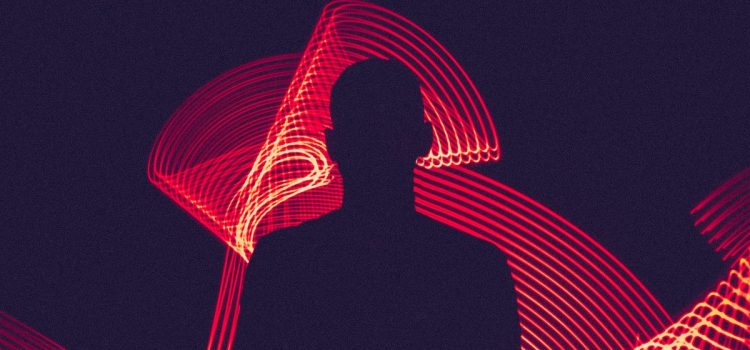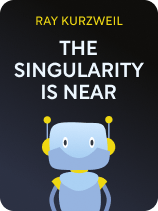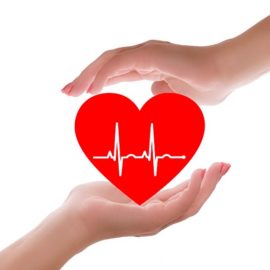

This article is an excerpt from the Shortform book guide to "The Singularity Is Near" by Ray Kurzweil. Shortform has the world's best summaries and analyses of books you should be reading.
Like this article? Sign up for a free trial here.
Can you imagine searching the web from your mind? Will you be an early adopter when it comes to nanotech-enhanced bodies?
In his thought-provoking book The Singularity Is Near, computer scientist Ray Kurzweil writes about the technological Singularity and what might come after it. He tries to envision a world beyond our experience and understanding—and perhaps even beyond our imagination.
Keep reading to learn some of Ray Kurzweil’s predictions for the next stage in human evolution.
Ray Kurzweil’s Predictions for Digital Life
Advances in genetics, nanotechnology, and computing power will all intertwine to create a future that we can only guess at from our current vantage point. Ray Kurzweil’s predictions touch on the combination of nanotechnology and medical science to create stronger and more durable human bodies. He believes that biotechnology and computer science will expand the reach of our minds. Beyond that, nanotech and strong AI will allow our future digital selves to manifest in the world in whatever form we choose.
Kurzweil writes that the first step of this process will be the creation of improved human bodies by merging nanotech with biology. At present, we already modify ourselves using medications, nutritional supplements, and prosthetic devices. By introducing nanobots into our bodies, we can use them to efficiently target pathogens and cancers, deliver oxygen and nutrients to our cells, and build organs on demand.
(Shortform note: One problem with the merger of machines and biology that Kurzweil doesn’t address is what happens when the technology enhancing your body becomes obsolete and you can’t find replacements. This has already happened to people with certain models of retinal implants designed to improve their vision. When the manufacturer, Second Sight, ran into financial troubles in 2019, patients with implants were suddenly vulnerable to equipment breakdowns with no avenue for repair. By 2022, Second Sight’s designs and systems had been acquired by another company that promises to supply replacement parts for a while, but has no plans to continue or upgrade the technology as it focuses on other applications instead.)
People may balk at having micromachines swarming through their bodies. But, as with any new technology, there will be a wave of early adopters until the benefits become clear. Kurzweil predicts widespread acceptance of nanotech-enhanced bodies at some point in the 2030s.
(Shortform note: Kurzweil slides around the fact that early adopters in the medical field aren’t patients, but doctors. Developers of new medical products must first identify and market to physicians who are willing to try out new treatments. These physicians can give feedback on the quality of new treatments while persuading their patients to accept new procedures. For successful innovations, doctors and patients may benefit from improved health and lower costs, but for nanotech to be welcomed as a cure-all, the medical community will have to be convinced before it’s even offered to the public.)
As for the brain, progress is being made to incorporate circuitry into the nervous system, primarily for use in treating spinal cord injuries, damaged nerves, and other neurological diseases. Kurzweil states that the next logical step is using brain-computer interfaces to improve the functionality of healthy nervous systems. Imagine being able to operate electronics with a thought, to search the web directly from your mind, or to experience virtual reality without wearing a clunky headset. With the oncoming advent of strong AI, being able to interface directly with computers becomes increasingly important. After all, we’d rather have AI become part of our human intelligence instead of replacing it completely.
(Shortform note: Progress in mind-machine connectivity is making great strides in the 2020s, primarily driven by medical research, just as Kurzweil suggests. In 2021, neurologists at the University of California were able to decode the brain signals of people with paralysis and translate them into text. This was built upon research done with epilepsy patients who participated in mapping the regions of the brain used to generate speech. In 2023, researchers took the next step and used a brain implant to allow a person with no voice or facial control to speak aloud and convey facial expressions through an AI-generated digital avatar.)
The Information Age
Remodeling our bodies and expanding our minds are the two vital steps to bridging the gap between our present biological forms and our post-Singularity digital selves. In a future in which microscopic nanobots can construct anything our AI-augmented minds design, information will be central to every aspect of our lives. Kurzweil explains why this will be so while speculating about how far an information-based society can go as it spreads its computational abilities beyond the confines of one lonely planet.
Kurzweil argues that, once our minds have gone digital, our physical forms won’t be so important. Rather, what will be vital in the future is maintaining the integrity of our information. Our digital selves will be made of information, which we’ll be able to embody in both the virtual world and the real one, perhaps by using nanobots to construct new physical bodies as we wish. Instead of being confined to one form, we’ll be able to project our digital selves into any environment we imagine. Of course, a society in which this is possible will look nothing like the one we live in today.
(Shortform note: One way to envision this possible future is to consider the digital avatars people use to represent themselves in video games and online communities. A digital being, whether a strong AI or an uploaded human, could conceivably create a physical avatar to interact with the real world. If this seems far-fetched, keep in mind that in a sense, it’s already happened. In 2023, during a test of OpenAI’s GPT-4, the AI used the digital platform TaskRabbit to hire a human to access a website and bypass its CAPTCHA screen to weed out bots. In essence, GPT-4 contracted a human to act as its avatar in the real world.)
Economically, we’ve already shifted to prioritizing intellectual property over the creation of material goods. In a future where nanobots manufacture products as an afterthought of design, generating new information will be the basis of all human endeavor. With the power of AI enhancing human creativity, there’s no way to predict the wonders we’ll achieve. Kurzweil writes that, in such a world, education will be even more important than it is today. At the same time, he believes that the “digital divide” between rich and poor will all but disappear once AI-tailored classes designed for individual learning become easily available all across the globe.
| Technology, Education, and Creation Kurzweil’s assumptions about the democratization of the digital revolution are based on the premise that the cost of computing plummets as technology advances. In practice, this has not yet translated to universal adoption of new technologies. Although internet access is widespread in Europe and the Americas, as of 2023 there are still almost 3 billion people worldwide with no online connectivity. Africa has the largest percentage of people without access, though internet availability has been trending upward with recent investments in digital infrastructure. Closing the gap further will require massive funding, particularly in the developing world, both from the public sector and private institutions. The impact of the digital divide on education was sharply demonstrated by the Covid-19 crisis, when education moved fully online. In countries with limited internet access, students went over 200 days with no educational progress at all. However, where access is available, online classes have been a boon to students who use its flexibility to learn at their own pace, customize their schedules, and virtually attend classes at schools far away. On the creative side, technology has opened new doors by providing those who generate content a global platform for their work and enabling collaboration across international borders. |
As technology accelerates into the Singularity and beyond, scenarios beyond our current human experience enter the realm of possibility. Kurzweil suggests that, as nanomachines permeate everything we build, so does their computational power, in effect turning everything into a computer. The result is a future in which even more of the physical world becomes imbued with machine intelligence. In a sense, the world will come alive—and not just ours. If we spread our technology and digital selves to other planets in our solar system and beyond, then every world we can reach with our spacecraft will be brimming with intelligent, artificial life.
(Shortform note: While we haven’t yet fulfilled Kurzweil’s dream of sending digital consciousness out into space, AI has become a vital part of planetary exploration. Because of the lightspeed delay in sending and receiving transmissions from space probes, the robots and spacecraft we send to other planets must be able to make decisions on their own. For example, rovers on the surface of Mars can steer around obstacles without guidance from Earth and even decide which nearby features to study. In Packing for Mars, Mary Roach goes into great detail about the physical and logistical problems of sending humans into space. Digital intelligence negates those constraints and allows access to worlds that are otherwise beyond our reach.)

———End of Preview———
Like what you just read? Read the rest of the world's best book summary and analysis of Ray Kurzweil's "The Singularity Is Near" at Shortform.
Here's what you'll find in our full The Singularity Is Near summary:
- The upcoming technological shift that will change everything
- The revolutions in bioscience, nanotechnology, and artificial intelligence
- How Kurzweil's predictions held up over time






